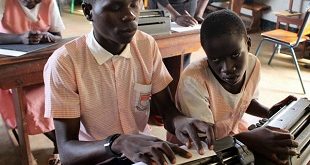
Kampala, Uganda | THE INDEPENDENT | A tool that will guide countries on how they can use an Ebola vaccine in case of an outbreak has been launched by scientists.
The tool called Ebola Vaccine 3C Gap Analysis and Dissemination that was launched in Lira is supposed to clearly define conditions under which the Ebola vaccine can be used.
Currently, two Ebola vaccines have been used during outbreaks, they are the Jansen vaccine and the Merck vaccine. Though the vaccines were used in Uganda and other countries neighbouring the Democratic Republic of Congo following the 2018 Ebola-Zaire outbreak, they were used on emergency grounds.
Following the approval of the Merck vaccine by the US Food and Drug Administration, the tool will explain under which circumstances a vaccine can be used and how it should be used.
The tool will be used in Uganda, Sierra Leone and Senegal. The implementation of the tool in Uganda will be supported by World Vision Ireland.
Professor Edward Kumakech, the lead author of the tool and a senior lecturer at Lira University said it will be used to assess the country’s readiness to deploy a vaccine.
“The objective is to create an evidence-based gap analysis tool for accessing the country’s readiness from a demand-side perspective to deploy a licensed Ebola vaccine in a variety of deployment scenarios,” Prof Kumakech said.
The tool will complement the World Health Organization’s Global Ebola Vaccine Implementation Team (GEVIT) practical guidance on the use of Ebola vaccine in an outbreak response.
According to Prof Kumakech, the 3C measures and activities have to be put in place, and done before a country re-actively deploys an Ebola vaccine.
“We wanted to use evidence to create a tool that any country not only Uganda, but any sub- Saharan can also use to assess their readiness or the readiness of their community to receive the Ebola vaccines and the readiness of the health systems to deploy Ebola vaccines,” he said.
He said the tool will strictly cover preparedness of the community to receive the vaccines as well as that of the health systems to deploy the vaccines.
He further explained that with the tool at hand, it can be adapted for use on any other vaccine deployed during epidemics including Covid-19 pandemic.
In 2019, piloting of the 3C Gap Analysis Tool revealed Uganda lagged in its Ebola response in three areas. The areas included; lack of systems to manage compliance, information about Ebola vaccine left out the gender and vulnerable groups in communities as well as misinformation about Ebola vaccines.
Kumakech says the tool will help to address these gaps.
Dr Bernard Omech, a senior lecturer at Lira University who was a director for the program that generated the tool could not hide his emotions having experienced the burden of Ebola epidemic.
Dr Edmond Acheka, the acting Lira District Health Officer who said the Gap Analysis tool should not end with Ebola vaccine explained that community demands should always be first when it comes to health.
According to the scientists, the tool will help reduce on Ebola-related deaths that might be caused by delayed interventions. More than 4,000 people are believed to have succumbed to the disease in the most recent outbreaks in the DRC. With immunization, this number can be reduced by more than half.
*****
URN
 The Independent Uganda: You get the Truth we Pay the Price
The Independent Uganda: You get the Truth we Pay the Price



